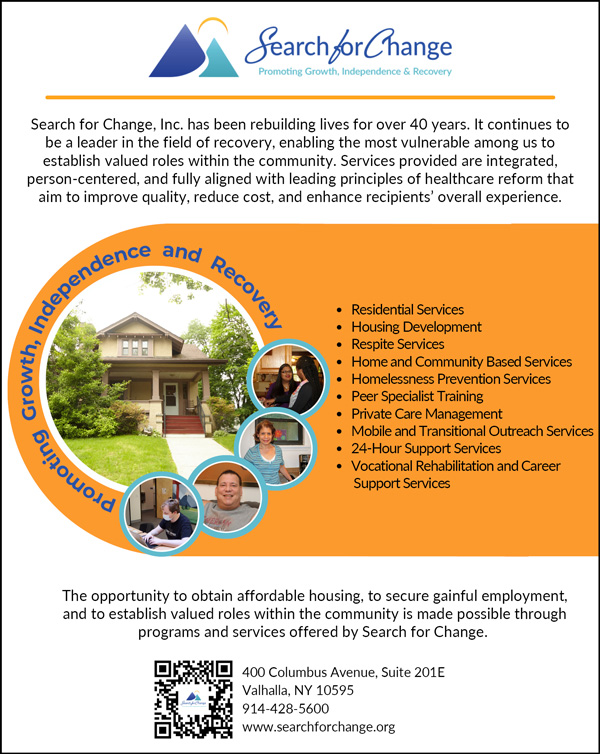A rising incidence of physical pain, and chronic physical pain in particular, necessitates a comprehensive examination of its underpinnings and relationship with other dimensions of health and wellbeing. This poses unique challenges for behavioral healthcare providers who operate amid a deeply entrenched dualism that continues to treat “mind” and “body” as separate phenomena. Despite recent advances in integrated care and a broader recognition of the role of Social Determinants of Health (SDoH) and Health Related Social Needs (HRSN) in health outcomes, providers operating in New York State remain subject to highly Balkanized licensing and regulatory structures that impede fully holistic approaches. The mere existence of separate governmental entities charged with oversight of healthcare and social welfare providers (e.g., Department of Health, Office of Mental Health, Office of Addiction Services and Supports, etc.) perpetuates models of care designed to treat discrete constellations of symptoms in lieu of people. The widespread comorbidity of physical and behavioral health conditions coupled with prevalent psychosocial and environmental stressors underscores the urgency to address all health and social welfare challenges in an integrated manner. An emerging body of research suggests individuals dually diagnosed with chronic pain and behavioral health conditions are at exceptional risk of adverse outcomes in the absence of fully integrated and holistic care approaches.

Ashley Brody, MPA, CPRP
Physical pain is commonly defined as “chronic” if it persists for at least three months, and it afflicts approximately one-fifth (20%) of American adults (Reid, 2024). Chronic pain is associated with decreased quality of life and diminished productivity and, by some estimates, accounts for $635 – $650 billion in medical expenses annually (Vadivelu et al., 2017). Its incidence has also increased in recent years, particularly among individuals at lower socioeconomic levels (Huzar, 2021). One investigation revealed a 14% increase in the incidence of chronic pain between 2002 and 2018 among financially stable individuals (i.e., those whose household income was four times the poverty level) and a 42% increase among those whose household income was only twice the poverty level (Huzar, 2021). When chronic pain is present in individuals with mental health conditions and other significant life challenges, its effects are frequently debilitating.
Extensive research has explored the association between Major Depressive Disorder (MDD) and chronic pain, and many findings affirm a reciprocal relationship between these conditions. MDD is present in 5% of the general population, but its incidence rises precipitously among individuals with chronic pain. One study found that 30% – 45% of chronic pain patients also meet the MDD criteria (Demyttenaere et al., 2007). Most researchers agree this relationship is multifaceted and cannot be attributed to a singular cause. Investigations of myriad biological, social, environmental, and psychological mechanisms underpinning this association have produced competing hypotheses and opened additional avenues of inquiry.
Nevertheless, the disparate incidence of chronic pain and depression among members of select socioeconomic and demographic populations indicate these, more than other factors, account for this relationship and reinforce its reciprocity. In addition, individuals dually diagnosed with chronic pain and MDD are at greater risk of opioid misuse and abuse. Some studies have demonstrated patients with MDD are more likely to receive opioid medications and in higher doses than patients without MDD. This trend poses obvious health and safety implications in view of an enduring opioid abuse epidemic that has had particularly deleterious effects on vulnerable populations (Edlund et al., 2010). This trend also underscores the imperative to promote alternative interventions for chronic pain and MDD that address the social, psychological, and environmental conditions that perpetuate these conditions. To this end, initiatives that target individuals’ social care needs should improve their overall quality of life and mitigate stressors known to exacerbate chronic pain and depression.
Research concerning the relationship between chronic pain and other forms of mental illness is comparatively limited, although some studies have revealed correlations between chronic pain and various personality and neurodevelopmental disorders. For instance, individuals with a diagnosis of borderline personality disorder (BPD), a personality disorder characterized by affective dysregulation, an unstable sense of self, and volatile interpersonal relationships, are more likely than members of the general population to experience chronic pain (Sansone & Sansone, 2012). Various causal mechanisms underpinning this association have been posited, including some that implicate iatrogenic factors. Healthcare professionals frequently stigmatize individuals with BPD since their behaviors may be perceived as “difficult” and their symptoms a product of personal choice or “misbehavior” (Sheehan, Nieweglowski, & Corrigan, 2016). Healthcare providers who harbor such beliefs (if only on an implicit level) regarding individuals with BPD are inclined to regard patients’ symptoms with skepticism or outright contempt. This skepticism may extend to patients’ reports of chronic pain and preclude the accurate identification of causes and potential treatments for pain (Newton et al., 2013). Instances of practitioner bias are surely not limited to patients with BPD, and such bias amid dual behavioral health and opioid abuse epidemics poses a grave threat to the most vulnerable members of our community.
Recent advances in integrated care and increased attention to the conditions in which people live, learn, work, and socialize promise to mitigate stressors known to exacerbate disorders of all types for which conventional (i.e., medically driven) approaches have proven ineffective. New York State is poised to achieve additional progress following the federal government’s approval of a Medicaid Waiver under Section 1115 of the Social Security Act through which healthcare and social welfare providers may claim additional resources to address individuals’ social care needs. By no means is this initiative a panacea for our ailing health and social welfare system, but its potential to further the cause of integrated care may yield enduring benefits for the most vulnerable among us, including those who must endure chronic pain and other impediments to integrated health care and wellbeing.
Ashley Brody, MPA, CPRP, CEO of Search for Change, Inc., may be reached at (914) 428-5600 (x9228) or abrody@searchforchange.org.
References
Demyttenaere, K., et al. (2007). Mental disorders among persons with chronic back or neck pain: results from the World Mental Health Surveys. Pain, 129(3), 332-342. https://pubmed.ncbi.nlm.nih.gov/17350169/
Edlund, M.J., et al. (2010). Trends in use of opioids for chronic noncancer pain among individuals with mental health and substance use disorders: the TROUP study. The Clinical Journal of Pain, 26(1), 1-8. https://www.ncbi.nlm.nih.gov/pmc/articles/PMC2917238/
Huzar, T. (2021, May 19). More and more US adults have chronic pain, new study shows. Medical News Today. https://www.medicalnewstoday.com/articles/more-and-more-us-adults-have-chronic-pain-new-study-shows
Newton, B.J., Southall, J.L., Raphael, J.H., Ashford, R.L., & LeMarchand, K. (2013). A narrative review of the impact of disbelief in chronic pain. Pain Management Nursing: official journal of the American Society of Pain Management Nurses, 14(3), 161-171. https://pubmed.ncbi.nlm.nih.gov/23972867/
Reid, S. (2024, February 5). Chronic pain and mental health. HelpGuide.org. https://www.helpguide.org/articles/illness-disability/chronic-pain-and-mental-health.htm
Sansone, R.A., & Sansone, L.A. (2012). Chronic pain syndromes and borderline personality. Innovations in Clinical Neuroscience, 9(1), 10-4. https://pubmed.ncbi.nlm.nih.gov/22347686/
Sheehan, L., Nieweglowski, K., & Corrigan, P. (2016). The stigma of personality disorders. Current Psychiatry Reports, 18(1), 11. https://pubmed.ncbi.nlm.nih.gov/26780206/
Vadivelu, N., Kai, A.M., Kodumudi, G., Babayan, K., Fontes, M., & Burg, M.M. (2017). Pain and psychology – A reciprocal relationship. The Ochsner Journal, 17(2), 173-180. https://www.ochsnerjournal.org/content/17/2/173




